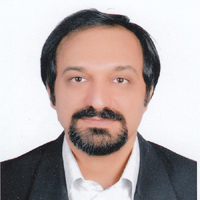First Painter, The First Signature (Raqam); A Study of Signatures (Raqam) in Persian Painting, Before the Advent of Junaid Sultani*
The The first attempts to identify Iranian art were made in Arthur Upham Pope’s comprehensive work entitled A Survey of Persian Art. Special attention to Iranian art and especially Iranian painting led to the formation of a kind of Iranian painting historiography in which special attention was paid to the classification of historical periods and the naming of painting schools. It has been created in those periods. By identifying and separating schools; The works, artists, and painters of the creator of the work were categorized, and then the individual style characteristics of each of the painters, theologians, and scribes were examined, as well as the manuscripts according to their beginnings, conclusions, and dates. The contents of them or the names of the scribes and commissioners, as well as the manner of execution of the headings and inscriptions and the lines written in them are attributed to these courses. In Iranian painting, a large part of the identity of a painting owes to the artist who created it as a painter. One of the most important factors in recognizing the creator of a work is the existence of the signature (Raqam) that the artist leaves on the work. Also, one of the most important topics in Iranian painting is attributing the name of the first painter painting, which has been honored to sign the painting and its work. Ernst Kuhnel was one of the first researchers to signature (Raqam) the work in Iranian painting. In his notes, he first refers to the version of “Humay and Humayun” by Khajo-ye Kermani, which was illustrated during the reign of Sultan Ahmad Jalayer, and then introduces Junaid Baghdadi as the first painter painter who was able to Soltani to Raqam his work entitled “Wedding day of Prince Humay and Humayun” in 799 AH. This title was awarded to Junaid during his activity in Baghdad by Sultan Ahmad Jalayer. Kuhnel’s statement has been confirmed and republished by many scholars. However, it should be noted that Kuhnel made a mistake in attributing the date of this version to 799 AH, and this mistake caused other writers and researchers who have studied the version of Humay and Homayoun Khajo-ye Kermani, this mistake of his Repeated in books and articles, and this illustrated work is mentioned on the same date, in the year 799 AH. Attribute. They do not appear to have seen the expiration date of the illustrations for Khajo-ye Kermani, now housed in the British Library, or to have mistranslated the Arabic text. Therefore, in this article, an attempt has been made to question these views first, and then to claim that there were undoubtedly other paintings that belong to the period before Junaid Baghdadi and by painters who lived before Junaid. Have been active, signed. Therefore, in order to achieve the accuracy of this issue and to respond to this skepticism and claim, examples of works by Iranian painters who worked in the library - royal workshops of other kings before Junaid have been examined, until The truth or falsity of this claim should be clarified. Therefore, the purpose of this article is to study paintings that have several features; First, that the paintings have a signature or Raqam, and second, before Junaid’s time of activity; That is, they were produced before the creation of the painting “Wedding day of Prince Humay with Humayon”, in 798 AH. Therefore, in this article, eight signed paintings or figures, which have been obtained and collected from libraries and museums of the world, have been examined. An examination of the eight paintings in this article shows that in the Jalayerid period - the period before the reign of Sultan Ahmad Jalayer - as well as the Seljuk period, paintings were created with the Raqams and signatures of painters such as Ahmad Musa, Mir Dolatyar, Mir Khalil, Sultan Uways Jalayer and Abd al-Mu’min ibn Muhammad al-Naqash al-Khoie are. These paintings were produced in the second half of the seventh century (650 AH) to 798 AH in different parts of Iran, which was the capital of kings. The result of the present study shows that contrary to the opinion of Ernst Kuhnel and other scholars like him, the first Iranian painter to be able to sign his work was Abd al-Mu’min ibn Muhammad al-Naqash al-Khoie, who painted around 650 AH. The romantic poem of Vargeh and Golshah depicts Ayyoughi in the Seljuk period. The time interval between the production of this work and the creation of Junaid Baghdadi’s painting in 798 AH in Baghdad is 148 lunar years. In the period between these two works, other works have been depicted that have been mentioned in this article. Historical information and documents, as well as library resources have been used to achieve the purpose and answer the questions of this article. The illustrations in this article and related information are also available online from the British, Berlin, and Istanbul Libraries. The research method in the background section is historical with a critical approach and in the drawing section, it has a historical, descriptive-analytical approach.
- حق عضویت دریافتی صرف حمایت از نشریات عضو و نگهداری، تکمیل و توسعه مگیران میشود.
- پرداخت حق اشتراک و دانلود مقالات اجازه بازنشر آن در سایر رسانههای چاپی و دیجیتال را به کاربر نمیدهد.



